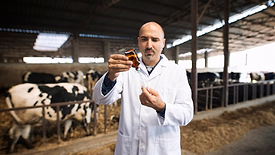USDA
A Better Way to Clean Up the Food Mess: Creating a New "FAD"
Complex and disparately funded regulatory oversight for food and beverage products, spread out among many federal agencies, has created a regulatory mess that demands a radical fix
October 15, 2024
Never miss the latest news and trends driving the food safety industry
eNewsletter | Website | eMagazine
JOIN TODAY!Copyright ©2025. All Rights Reserved BNP Media.
Design, CMS, Hosting & Web Development :: ePublishing











